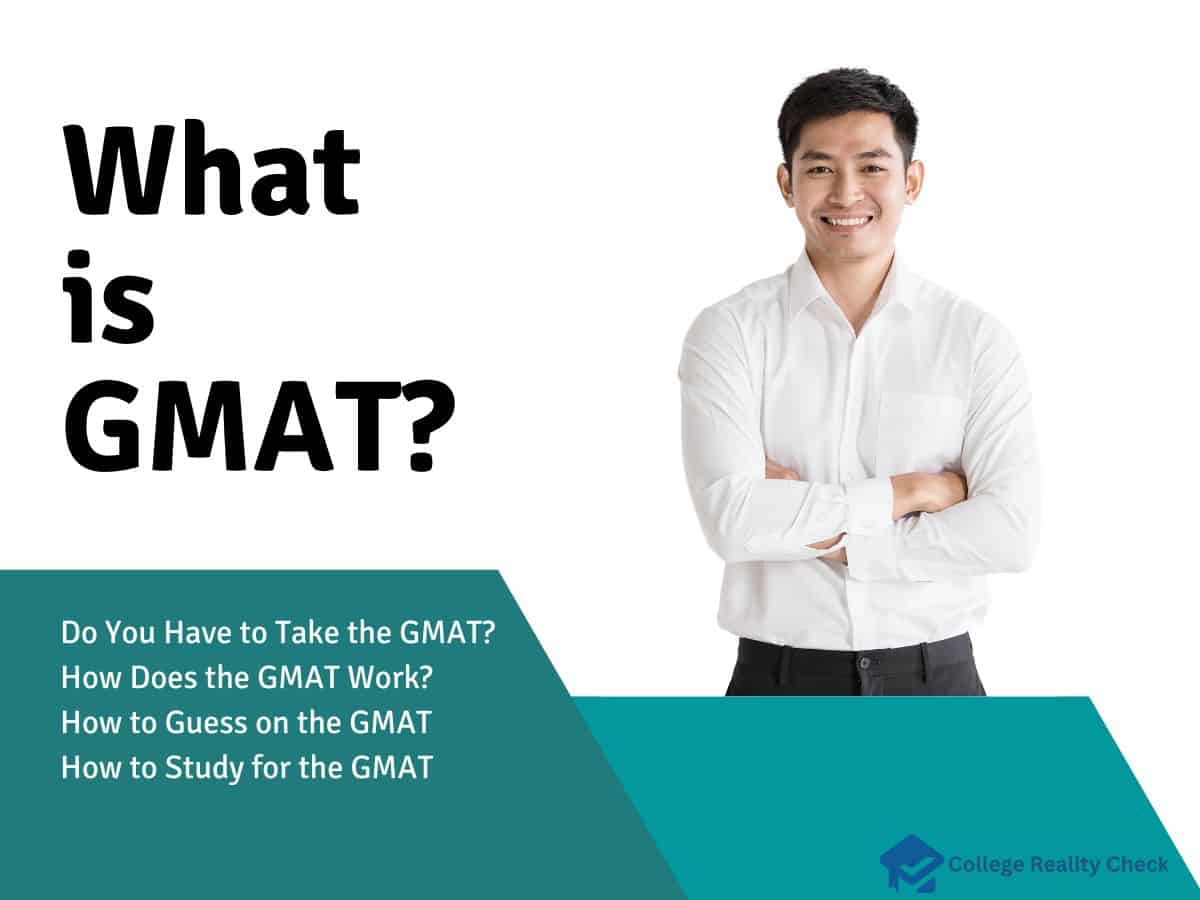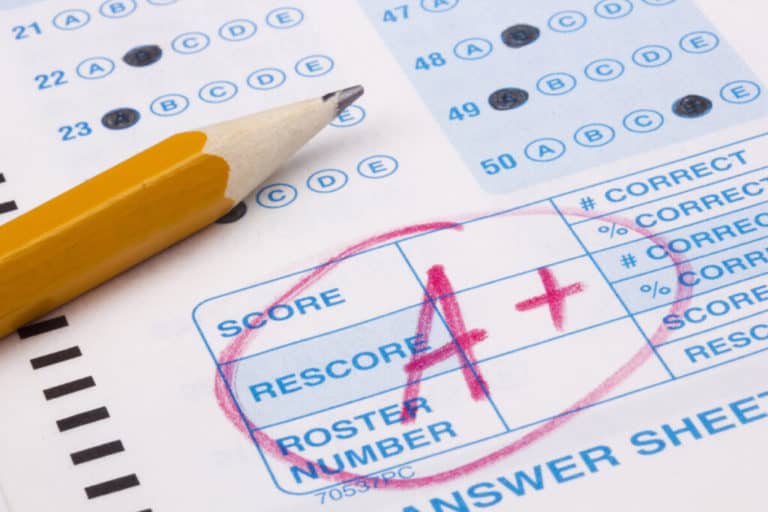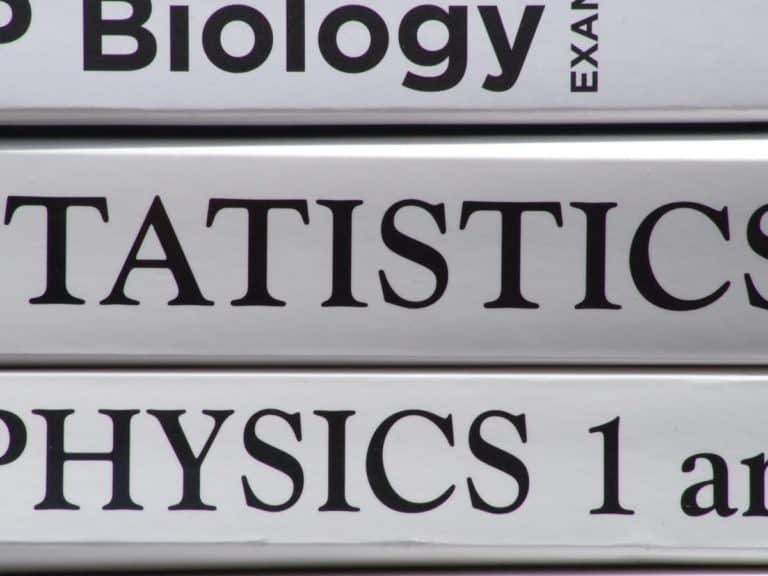The Ultimate Guide to the GMAT Exam
Sitting for the Graduate Management Admission Test (GMAT) may be one of the most important steps you need to take if you are planning on applying to business school to get your hands on an MBA.
The GMAT is a standardized test used by many business schools as well as business and management graduate programs as an entrance exam.
Every year, thousands of students from all over the planet take the GMAT, which is done using a computer at either test centers or the homes of examinees by means of remote proctoring.
Check out the entirety of this article if you wish to become a business school student.
Is the GMAT Important for College Admissions?
Depending on the academic institution, the GMAT is a standardized test, and it’s the most important part of the application to a business program.
As a matter of fact, a below-average GMAT score could keep an applicant from getting into his or her top-choice business school or graduate degree program even if the rest of his or her application is competitive enough.
Do You Have to Take the GMAT?
Whether or not business school applicants have to take the GMAT will depend on factors such as the institutions they are applying to as well as the graduate program they are interested in.
For instance, some business schools may require applicants to certain graduate programs to submit their GMAT scores, while they may not do the same to applicants to other programs.
In the US, around 45% of MBA programs do not require the GMAT.
Can Colleges See How Many Times You Took the GMAT?
Because examinees can choose to cancel their GMAT scores within 72 hours after sitting for the standardized test, they can keep admissions officers at business schools from seeing scores they are unhappy with.
In addition, a GMAT score is only valid for 5 years, which means that scores more than 5 years old will automatically be erased from one’s record.
What is on the GMAT?
The GMAT consists of 4 different sections, all of which are designed to measure certain skills of test-takers that they will need to face the challenges of a business school curriculum.
Of the various GMAT sections, the Quantitative Reasoning and Verbal Reasoning sections are easily the most critical.
As a matter of fact, they make up the GMAT total score that ranges from 200 to 800.
How Many Sections are on the GMAT?
There are a total of 4 sections on the GMAT, and they are the following:
- Analytical Writing Assessment
- Integrated Reasoning
- Quantitative Reasoning
- Verbal Reasoning
Of course, each section evaluates a different set of skills and proficiencies of a test-taker. We will discuss this matter in a few while talking about the things that the GMAT measures.
How Many Questions is the GMAT?
The GMAT consists of 80 questions all in all. Among the 4 different sections, the Verbal Reasoning section has the greatest number of questions, amounting to a total of 36 questions.
On the other hand, the section with the least number of questions is the Analytical Writing Assessment section, which has only 1 question.
Below is a table showing the number of questions each GMAT section has:
| Section | Number of Questions |
| Analytical Writing Assessment | 1 |
| Integrated Reasoning | 12 |
| Quantitative Reasoning | 31 |
| Verbal Reasoning | 36 |
What Kind of Math is on the GMAT?
The GMAT Quantitative Reasoning section contains multiple-choice math questions that cover basic concepts such as algebra, arithmetic and geometry.
It may seem like the said section is a math test, but it’s really not.
Here are an examinee’s math skills that the GMAT is designed to test and also some of what each of them entails:
- Algebra – Linear equations, exponents and functions
- Arithmetic – Number properties, fractions, ratios and percentages
- Geometry – Lines, angles, circles and polygons
- Statistics – mean, median and deviation
Is There Science on the GMAT?
There is no section on the GMAT that tests a candidate’s hard science knowledge and skills.
However, the business school entrance exam may not be completely devoid of science — in the reading comprehension component of the GMAT Verbal Reasoning section, there’s an academic reading passage on a topic related to various areas or disciplines, and biological science or physical science could be one of them.
Is There Writing on the GMAT?
Needless to say, the presence of a section called Analytical Writing Assessment on the GMAT means that there is writing on the standardized test. The task is for the test-taker to write an essay in 30 minutes.
The Analytical Writing Assessment section, by the way, is also referred to as AWA or the Essay section.
What are GMAT Reasoning Tests?
Although it has math problems alright, the Quantitative Reasoning of the GMAT is primarily meant to assess the ability of test-takers to think logically about various math concepts.
The Verbal Reasoning section of the GMAT, meanwhile, is meant to evaluate the command of standard written English of the business school candidate. Similarly, it measures his or her ability to read critically as well as analyze arguments.
On the other hand, the GMAT Integrated Reasoning is basically the combination of the sections Quantitative Reasoning and Verbal Reasoning.
It consists of a lot of data (text, graphs, charts, etc.) that examinees need to process and also tests their ability to interpret them and, more importantly, solve problems.
How Does the GMAT Work?
The GMAT is a computer-based standardized test. It’s composed of 4 different timed sections.
The business school entrance exam is also adaptive, which means the difficulty level of the questions depends on the test-taker’s performance.
What Does the GMAT Measure?
The GMAT is designed to measure an examinee’s skills that are vital to various business and management programs.
Each of the 4 different sections of the standardized test evaluates certain proficiencies.
Let’s take a look at what each of the section of the GMAT assesses:
- Analytical Writing Assessment – As the name suggests, this section tests the candidate’s critical reasoning skill as well as his or her ability to communicate thoughts and ideas in writing clearly.
- Integrated Reasoning – This particular GMAT section appraises the individual’s ability to solve problems by processing large amounts of data through interpretation of information from charts, graphs and others.
- Quantitative Reasoning – Simply put, this section measures the knowledge of the examinee of math and also his or her capacity to think logically about math concepts in areas such as algebra and geometry.
- Verbal Reasoning – This section of the GMAT is designed to test the candidate’s ability to read critically and analyze arguments as well as his or her command of standard written English.
Is the GMAT Multiple Choice?
Many of the questions on the GMAT are multiple-choice questions. These types of questions can be found in both the Quantitative Reasoning and Verbal Reasoning sections.
It goes without saying that the Analytical Writing Assessment section has 1 essay question. Meanwhile, the Integrated Reasoning section consists of what’s referred to as TITA questions.
TITA stands for type in the answer.
So, in other words, TITA questions are the free-response types.
Is the GMAT a Standardized Test?
The GMAT is a standardized test. As a matter of fact, it’s the most widely accepted standardized kind of test by business schools.
It’s referred to as such as examinees, regardless of the undergraduate degrees they have or where they earned them, have to answer the same questions.
What’s more, their tests are scored in the same manner.
Needless to say, it allows business schools to compare applicants on an equal playing field.
When Do You Take the GMAT Test?
The general consensus is that an individual who is planning on going to business school should take the GMAT at least 2 months before the application deadline.
Doing so helps ensure that the official GMAT score report will be available by the time the candidate is ready to hand in his or her application and other admission requirements.
It’s also a must to check that the examinee has about 2 to 3 months of preparation for the GMAT.
Because business schools and MBA and other similar programs have an array of application terms and deadlines, it’s essential for the person to research ahead of time so that he or she may be able to sit for the GMAT at the right time.
How to Guess on the GMAT
Instead of taking a long time to figure out the answer to a question, it’s a much better idea to guess on the GMAT.
Running out of time when there are still a handful of questions to answer could hurt a test-taker’s score.
When guessing on multiple-choice questions, an examinee should quickly eliminate as many incorrect answer options as he or she possibly can to increase the chances of getting the right answer option.
How Long is the GMAT?
The exam proper of the GMAT is 3 hours and 7 minutes long. Test-takers may or may not choose to take a total of 2 breaks, each being 8 minutes long — the total duration of the GMAT is 3 hours and 23 minutes long if both breaks are taken.
Among the different sections of the computer-based standardized test, the Verbal Reasoning section is the longest, given that it has the greatest number of questions.
On the other hand, both the Analytical Writing Assessment and Integrated Reasoning sections have the least amount of time because they have the least number of questions.
Here’s a table showing the duration of each of GMAT’s sections:
| Section | Time Limit |
| Analytical Writing Assessment | 30 minutes |
| Integrated Reasoning | 30 minutes |
| Quantitative Reasoning | 62 minutes |
| Verbal Reasoning | 65 minutes |
How Does the GMAT Scoring Work?
The scoring system for the GMAT is different from the scoring systems for most other standardized tests.
Instead of the total number of questions the examinee got right or the average or scaled score of all correct answers, the GMAT is scored based on the difficulty level that the test-takers were able to maintain all the way until the end of a GMAT section.
So, in other words, the individual’s score is the level of difficulty by the time that he or she is through with a section.
Keeping a steady performance from start to end, therefore, is important for the business school candidate to get a good GMAT score as well as not to put a strong first half of the section to waste as a result of a weak second half.
It goes without saying that it’s the computer that scores an examinee’s GMAT.
Meanwhile, since the Analytical Writing Assessment section is an essay, the work is scored by a human examiner and also by a computerized program, considering things such as structure, flow, stated examples and argument analysis.
Let’s check out the score range as well as point increment of each of the GMAT’s sections:
| Section | Point Increment | Score Range |
| Analytical Writing Assessment | 0.5-point increments | 0 to 6 |
| Integrated Reasoning | 1-point increments | 1 to 8 |
| Quantitative Reasoning | 1-point increments | 6 to 51 |
| Verbal Reasoning | 1-point increments | 6 to 51 |
All 4 scores for the 4 sections of the GMAT appear on the score report.
However, there is another figure on the GMAT score report, which is the GMAT total score. The said score is obtained by combining the scores from the Quantitative Reasoning and Verbal Reasoning sections.
The resulting number is then graded on a scale of 200 to 800, and this number is what most business schools look at.
What is a Good GMAT Score?
Generally speaking, a GMAT total score of 700 is considered very good. Meanwhile, a 750 is considered excellent.
But it’s important to note that a good GMAT score depends on the business school or graduate degree program the candidate is interested in.
For increased admissions chances, his or her GMAT total score should be at or above the average for the most recent admits — many business schools publish the average and the full range of scores of admitted students.
Facts About the GMAT
Unlike many standardized tests, the GMAT doesn’t have specific test dates. So, in other words, individuals who are planning on applying to business schools may register for and take it at any given time of the year.
The GMAT can be taken up to 5 times per year, although only up to 8 times in a person’s lifetime.
Examinees can choose to take the GMAT either at test centers or via online.
The in-person version costs $300 in the US and most other countries, while the online version costs $275. The registration fee already includes the GMAT score report, which can be sent to as many as 5 programs within a certain period.
Below are some other things you might want to learn about the GMAT:
History of the GMAT
It was in 1953 when the GMAT came into being. It was established to solve a problem faced by many business schools during that time, which was to have a way to accurately evaluate the ability of an applicant to perform in the rigors of a graduate business or management degree program.
When it was founded, the GMAT was referred to as the Admissions Test for Graduate Business Study (ATGBS).
The very first administration of the said standardized test happened a year after its creation, and it was taken by less than 3,000 candidates.
Back then, only 10 business schools considered GMAT scores.
It goes without saying that the GMAT started out as a paper and pencil examination. In 1997, the business school entrance exam became computerized, which was also the moment when it turned into an adaptive type of test.
Who Created the GMAT?
The GMAT was created by the Graduate Management Admission Council (GMAC), which consulted the Educational Testing Service (ETS) — the same non-profit organization behind standardized tests such as the Test of English as a Foreign Language (TOEFL) and the Graduate Record Examination (GRE).
In 2005, however, GMAC brought its relationship with the ETS to an end.
What is the Graduate Management Admission Council?
An international non-profit organization of business schools, GMAC offers world-class research, conferences, recruitment solutions and assessments for the graduate management education industry.
It also provides a number of resources, events and services designed to help facilitate the journey of candidates through higher education.
How Many People Take the GMAT?
According to data provided by GMAC itself, a total of 173,176 individuals all over the planet took the GMAT in the testing year 2020.
Of those examinees, 45,648 were from the US, making up 26.36% of all test-takers worldwide.
The mean age of American students who sat for the GMAC in the said testing year was 26 years old.
What is the GMAT Designed to Predict?
The GMAT is designed by GMAC in a way to help admissions officers at business schools predict the likelihood of applicants achieving academic success while working on a business or management degree program and also beyond.
It does so by testing skills such as critical thinking and reasoning skills that they will need.
Does the GMAT Provide Calculators?
The GMAT provides test-takers with calculators, which means that there is no need for them to take calculators with them to test centers.
Since the business school entrance exam is computer-based, it doesn’t come as a surprise that the kind of calculator examinees are allowed to use is the onscreen kind.
However, it’s important to note that the onscreen calculator is allowed in the Quantitative Reasoning section only. In the Integrated Reasoning section where there are also math questions, using the said calculator is prohibited.
But those who are sitting for the GMAT are provided with markers and note boards for calculation purposes.
GMAT Changes
GMAC is planning on launching in late 2023 what it refers to as the GMAT Focus Edition.
Simply put, the new standardized test will be shorter and more focused on business-related matters. GMAC says that it’s the biggest change to the GMAT since 1997 when it turned from paper and pencil to digital.
The sections that will remain on the GMAT Focus Edition, based on the limited amount of information about the all-new GMAT, include both Quantitative Reasoning and Verbal Reasoning.
They will be joined by a new section, the Data Insight section, which will test the examinee’s data analysis, data interpretation and data-driven decision-making skills.
How to Study for the GMAT
As mentioned earlier, a business school-bound student should consider gearing up for the GMAT 2 to 3 months prior to the test date to have plenty of time to deal with one’s weakness in certain subject areas.
Practicing for the standardized test is best initiated with a full-length practice test.
Doing so allows the examinee to have an idea of his or her current GMAT score, which should be compared at a later score after reviewing for weeks.
Of course, the establishment of good study habits is of utmost importance.
The official GMAT Handbook provides many different important information every test-taker needs to know, from registering to what to expect on the test date.
There are also numerous prep books and practice questions available online, free and paid.
Some candidates might benefit from taking GMAT classes, which are available online, in-person and self-paced forms. A GMAT bootcamp might be helpful for examinees who are in a crunch time.
GMAT Practice Test
Below, you will come across 5 GMAT sample questions — the first 2 questions are from the Verbal Reasoning section, while the last 3 questions are math questions commonly found in both Integrated Reasoning and Quantitative Reasoning sections.
1.
A food writer wrote that reducing the amount of animal products in a person's diet can contribute to better health and well-being. Based on this claim, some people are completely eliminating meat from their diets in order to be healthier. The argument above relies on which of the following assumptions?
2.
Studies reveal that a daily exercise regimen helps stroke survivors regain dexterity in their extremities. Being given an exercise routine and having a consultation with a doctor about the exercise routine have been shown to be effective mechanisms to get patients to exercise daily. From this, which of the following statements can be reasonably inferred?
3.
A certain company sells tea in loose leaf and bagged form, and in five flavors: Darjeeling, earl grey, chamomile, peppermint, and orange pekoe. The company packages the tea in boxes that contain either 8 ounces of tea of the same flavor and the same form, or 8 ounces of tea of 4 different flavors and the same form. If the order in which the flavors are packed does not matter, how many different types of packages are possible?
4.
Anna sold her house at a loss of 25% of the price that she originally paid for the house, and then bought another house at a price of 30% less than the price she originally paid for her first house. If she sold the first house for $225,000, what was her net gain, in dollars, for the two transactions?
5.
In a particular company, at least 200 people own manual transmission vehicles. If 12% of the people who own manual transmission vehicles also own automatic transmission vehicles, do more people own automatic transmission vehicles than own manual transmission vehicles? (1) 5% of the people who own an automatic transmission vehicle also own a manual transmission vehicle. (2) 15 people own both an automatic transmission vehicle and a manual transmission vehicle.
Answer key:
The GMAT sample questions above are from the following site: www.princetonreview.com

Should I Take the GMAT or GRE?
When applying to graduate school, there are a couple of exams that the candidate may have to take: the GMAT or the GRE.
It’s true that both are commonly required by graduate schools.
However, the GRE is applicable to a wide range of graduate programs, including some business and management graduate programs, while the GMAT is exclusive to business-related graduate programs.
To know which of these standardized tests is best taken, communicate with your top-choice business school and ask which between the GMAT and GRE they require.
Read Next: What is GRE?
Disclaimer: The views and opinions expressed in this article are those of the authors and do not necessarily represent those of the College Reality Check.






